Aloha fellow surf enthusiasts! If you aspire to become a surfer and wonder where to begin, San Diego is the place to be. Many iconic surfers started their journey on these rolling waves, by these alluring sandy beaches, amongst this rad welcoming community. We are amped to present you with this comprehensive guide that delves deep into the top 8 beginner-friendly surf spots that the city has to offer. The world of surfing awaits you, suit up and hang loose. \
Table of Contents
- TL;DR
- Comparing the Best Beginner Surf Spots in San Diego
- Criteria for Evaluating Beginner Surf Spots
- La Jolla Shores
- Tourmaline Surf Park
- Mission Beach
- Pacific Beach
- Ocean Beach
- Oceanside Pier
- Moonlight Beach (Encinitas)
- Carlsbad State Beach
- Notable Mentions
- Frequently Asked Questions
- Final Thoughts
TL;DR
La Jolla Shores offers gentle waves, a sandy bottom, and full amenities, making it one of the most renowned beginner spots.
Tourmaline Surf Park in Pacific Beach provides mellow waves, a welcoming vibe, and excellent facilities for learners.
Mission Beach’s smaller, mushy waves and wide sandy beaches are perfect for practicing fundamentals.
Pacific Beach (PB) delivers consistent beach breaks, a soft sandy bottom, and a lively surf community.
Ocean Beach (OB) boasts a laid-back vibe, decent waves for progression, and convenient surf schools.
Oceanside Pier offers waves on both sides of the pier, though it can get crowded with locals and tourists.
Moonlight Beach in Encinitas provides gentle waves, wide sandy beaches, and a mellow, welcoming atmosphere.
Carlsbad State Beach offers smaller waves, an all-sandy bottom, and a friendly surf community.
Criteria for Evaluating Beginner Surf Spots
No one is born a surfer; we were all beginners once, thus we know what you must look for to ensure a safe, enjoyable, and productive learning experience. Before we explore the top choices, let’s outline the criteria we’ll use to evaluate the best beginner surf spots in San Diego.
The prime criteria to look out for are wave conditions; beginners need consistent yet gentler waves that are easier to catch and ride without tumbling over. Yet you don’t want very small ankle slappers, but rather waves that are just big enough to surf.
Then you have to consider beaches with sandy beach breaks. You have to accept the fact that learning how to surf means falling off your board over and over again as you progress; trust us when we say, falling on soft sand is much more forgiving than hitting a reef or rocks. We learned that the hard way, fortunately for you, you have our guide for advice.
The crowd level is another key factor; less crowded spots offer ample space for practice and reduce the risk of interfering with other surfers.
Convenience and safety are enhanced by amenities like lifeguards, restrooms, and parking.
Lastly, the atmosphere is critical; a beginner-friendly vibe, with a welcoming and supportive community, is far more conducive to learning than an aggressive or territorial local crowd.
By evaluating these criteria, we can identify surf spots that are a haven for beginners, offering the perfect environment for learning and progression.
La Jolla Shores
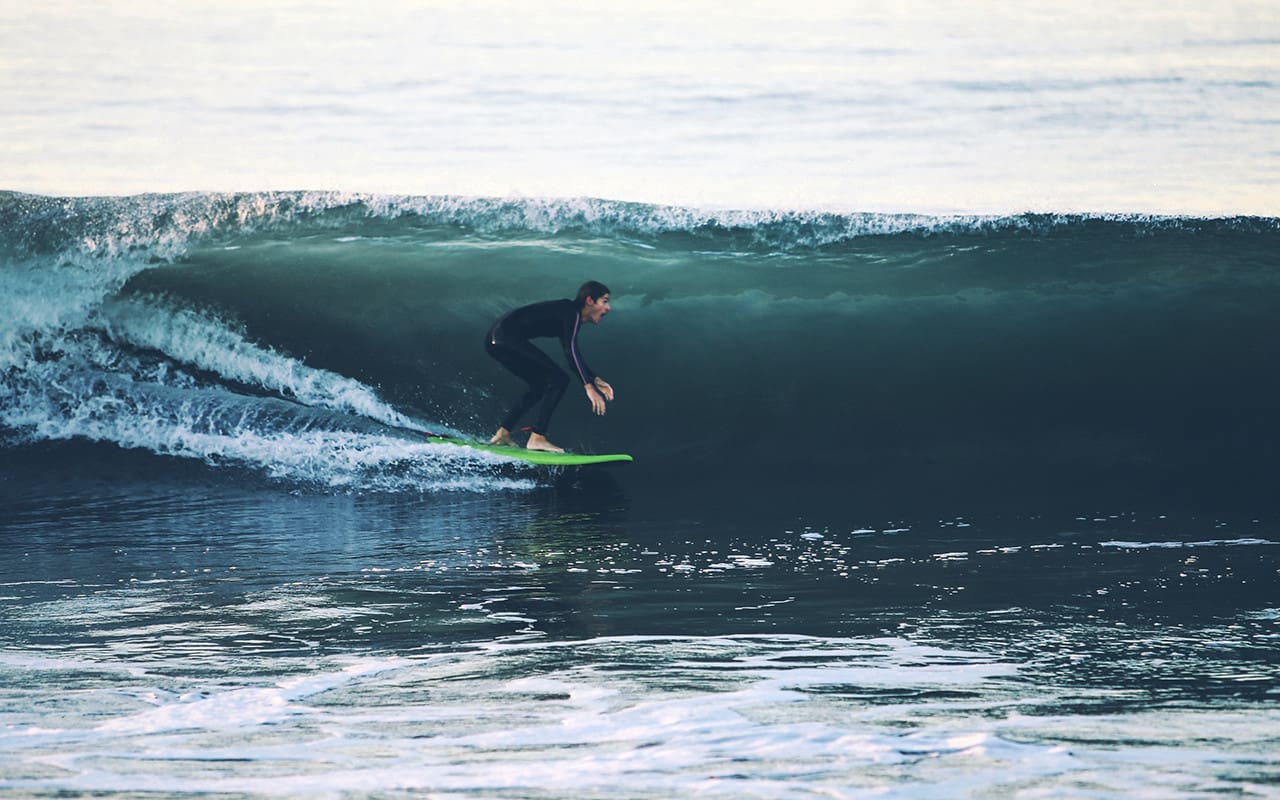
What La Jolla Shores is Best Known For
La Jolla, a charming coastal village known for its upscale boutiques, art galleries, and a diverse array of casual cafes and fine dining restaurants. La Jolla’s dramatic cliffs, crystal-clear waters, and pristine sandy beaches make it a haven for photography and sightseeing. But more importantly; its golden beach, celebrated for its gentle waves, and sandy beach breaks are perfect for beginner surfers, with many surf spots within it and around it; like Windansea Beach, La Jolla Shores, and Black’s Beach.
Features of La Jolla Shores
La Jolla Shores is particularly known for its sandy-bottomed break, which produces gentle, forgiving waves that roll smoothly to shore. This makes it an excellent spot for beginners to practice without the risk of hitting reefs or rocks. The expansive beach offers plenty of space, allowing novices to spread out and learn without feeling crowded.
Additionally, La Jolla Shores boasts numerous amenities tailored to surfers of all levels. The beach is lined with surf schools and rental shops, providing lessons, equipment rentals, and expert guidance for beginners. Lifeguards are present, ensuring a safe environment, and there are nearby restrooms and parking facilities for added convenience.
With its gentle waves, spacious beach, and extensive amenities, La Jolla Shores is an ideal destination for beginner surfers, offering a supportive and well-equipped environment to develop their skills and enjoy the surf.
Pros of La Jolla Shores
Gentle, Consistent Waves
Wide Sandy Beach
Abundance of Surf Schools and Rentals
Lifeguarded and Well-Equipped
Cons of La Jolla Shores
Can Get Crowded, Especially During Peak Season
Limited Parking in the Immediate Area
Criteria Evaluation for La Jolla Shores
Wave Conditions: 4/5
Sandy Bottom: 5/5
Crowd Levels: 3/5
Amenities: 5/5
Beginner-Friendly Vibe: 4/5
Price
La Jolla Shores is a free public beach, but there are costs for surf lessons and equipment rentals. Group lessons usually cost $60 to $100, while private lessons range from $100 to $200 or more. Surfboard rentals average $30 to $50 per day, and wetsuit rentals cost about $10 to $20. Many surf schools offer lesson packages that include equipment rentals, making it a more affordable option for beginners.
Where to Find La Jolla Shores
La Jolla Shores is located in the upscale La Jolla community of San Diego, just a short drive from downtown. You can find it at 8200 Camino del Oro, La Jolla, CA 92037.
Tourmaline Surf Park
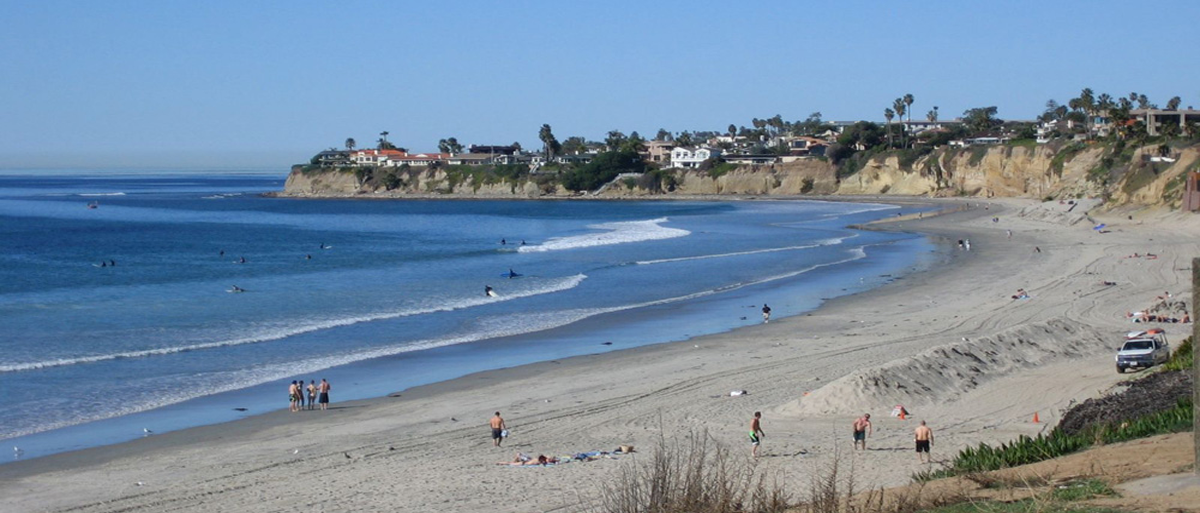
What Tourmaline Surf Park is Best Known For
Situated on the border between Pacific Beach and La Jolla, Tourmaline Surf Park is renowned as a “surfer’s mecca” in San Diego. This iconic spot is celebrated for its mellow, consistent beach breaks, ideal for surfers of all levels, from beginners to experts. Its welcoming atmosphere and excellent amenities make Tourmaline a popular destination for those aiming to learn and improve their surfing skills.
Features of Tourmaline Surf Park
Tourmaline Surf Park features a coastal cliff that curves the incoming tide, creating ideal surfing conditions for all levels. The wide, sandy beach offers a soft landing for those inevitable wipeouts during the learning process. The park is well-equipped with amenities catering to surfers, including lifeguards for safety, restrooms, showers, fire pits, picnic tables, and BBQ areas for post-surf relaxation. Free parking is also available, making it a convenient spot to spend the day. Most importantly, Tourmaline fosters a welcoming and inclusive surf community, where experienced surfers often provide tips and encouragement to beginners.
Pros of Tourmaline Surf Park
Mellow, Consistent Waves Suitable for All Levels
Wide Sandy Beach for Safe Practice
Excellent Amenities and Facilities
Welcoming Surf Community
Cons of Tourmaline Surf Park
Can Get Crowded During Peak Hours and Seasons
Limited Parking in the Immediate Area
Criteria Evaluation for Tourmaline Surf Park
Wave Conditions: 4/5
Sandy Bottom: 5/5
Crowd Levels: 4/5
Amenities: 5/5
Beginner-Friendly Vibe: 5/5
Price
Tourmaline Surf Park, like many public beaches in San Diego, has no entry fee and is open to all. However, if you want to take surf lessons or rent equipment, there are some costs. Surf schools typically charge $60 to $100 for group lessons, with private lessons ranging from $100 to $200 or more. Daily surfboard rentals average $30 to $50, and wetsuit rentals cost $10 to $20. Many surf schools offer packages that include equipment rentals, making it a more affordable option for beginners.
Where to Find Tourmaline Surf Park
Tourmaline Surf Park is located in the Pacific Beach community of San Diego, just north of the iconic Crystal Pier. You can find it at 700 Tourmaline St, San Diego, CA 92109.
Check out our tips for choosing the right surf spot for your skill level. Now then, let’s continue with the next top beginner surf spot.
Mission Beach
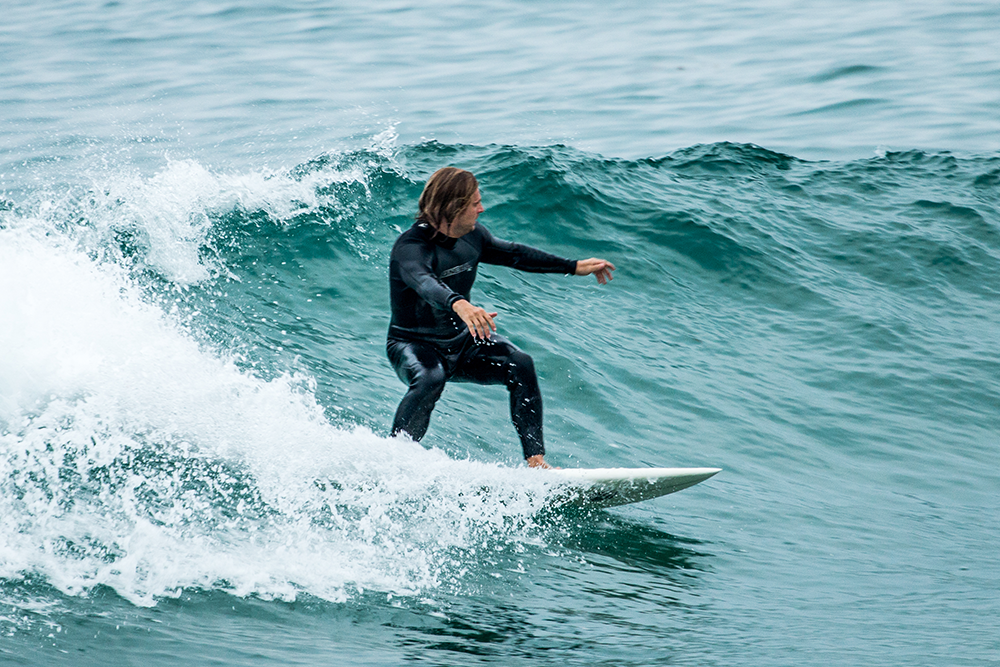
What Mission Beach is Best Known For
Mission Beach is renowned for its expansive, wide beach, historic amusement park, and friendly, laidback atmosphere. Located in one of San Diego’s most popular beach neighborhoods, this lively community is famous for its smaller, mushier waves, perfect for practicing surfing fundamentals. The wide, sandy beaches offer a forgiving environment for those inevitable wipeouts, making it an ideal spot for beginners starting their surfing journey.
Features of Mission Beach
Mission Beach is famed for its expansive sandy shoreline that offers vast space for beginners to spread out and practice without feeling crowded. The waves of Mission beach are smaller and mushier, making them ideal for learning the basics of paddling, popping up, and riding.
Mission Beach is well-equipped with amenities that surfers and beachgoers appreciate. Lifeguards are on duty, ensuring safety. Restrooms and showers make beach visits more convenient. The lively vibe is a treat as you stroll around artsy restaurants, shops, and the iconic Belmont Park amusement park.
The beach can get crowded during peak seasons, but beginners are still offered a space to learn and progress without hindering more experienced surfers.
Pros of Mission Beach
Smaller, Mushy Waves Perfect for Learning Fundamentals
Wide Sandy Beaches for Safe Practice
Lively Atmosphere with Boardwalk and Amenities
Lifeguarded and Well-Equipped
Cons of Mission Beach
Can Get Extremely Crowded, Especially During Summer
Limited Parking in the Immediate Area
Some Areas Can Have Territorial Locals
Criteria Evaluation for Mission Beach
Wave Conditions: 4/5
Sandy Bottom: 5/5
Crowd Levels: 3/5
Amenities: 5/5
Beginner-Friendly Vibe: 4/5
Price
Mission Beach itself has no entry fee; similar to the public beaches we mentioned above. However, for those interested in surf lessons or renting equipment, prices range around the same average with other public beaches as well. Surf schools in the area charge between $60 and $100 for a group lesson, with private lessons ranging from $100 to $200 or more.
Surfboard and wetsuit rentals are also available with daily rentals averaging around $30 to $50 for a board, and $10 to $20 for a wetsuit. Many surf schools offer bundled packages that include equipment rentals, providing a more affordable option for beginners.
Where to Find Mission Beach
Mission Beach is located in the heart of the iconic beach community of the same name, just north of the bustling Pacific Beach area. You can find it at 3768 Mission Blvd, San Diego, CA 92109.
Pacific Beach
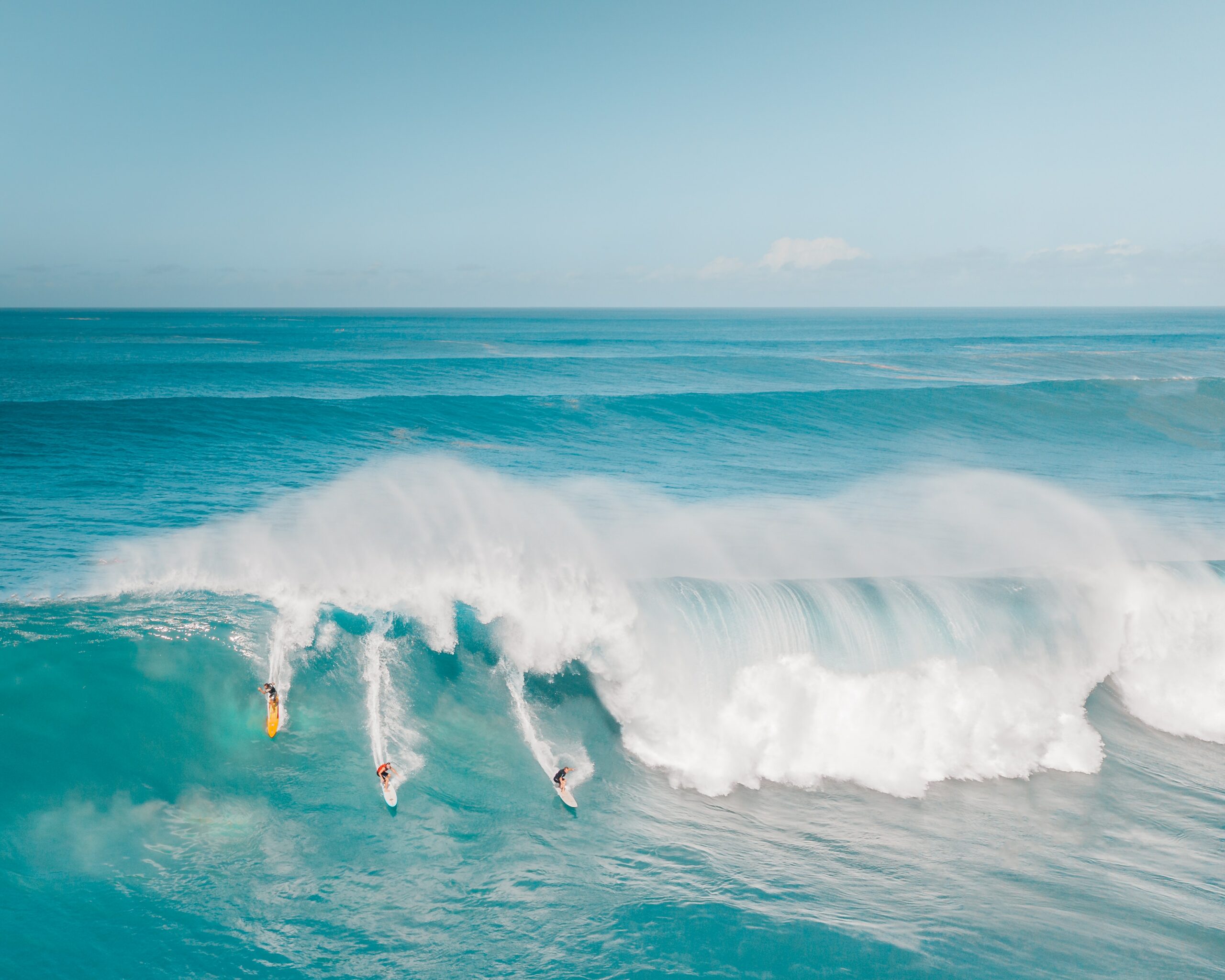
What Pacific Beach is Best Known For
Pacific Beach, affectionately known as “PB”, is one of San Diego’s top surf spots and is home to one of the most vibrant beach communities. The famed, historical Crystal Pier enhances the waves by acting as a barrier, altering the beach’s topography to provide more sand-bottom beach breaks. Combined with reef breaks, PB offers a variety of waves suitable for all skill levels, yet gentle sand breaks make it especially favorable for beginners aiming to improve their skills safely.
Features of Pacific Beach
Pacific Beach features a wide, sandy shoreline that provides a soft landing for inevitable wipeouts during the learning process. The iconic, historical Crystal Pier creates sandy beach breaks, producing consistent, gentle waves perfect for practicing surfing fundamentals, from paddling to popping up and riding. The Pier itself is a popular hangout spot; on and around the Pier; PB is well-equipped with amenities; restrooms, showers, restaurants, bars, and shops. Lifeguards are always present to ensure a safe environment.
Pros of Pacific Beach
Consistent Beach Breaks for Practicing Fundamentals
Wide Sandy Beach for Safe Landings
Lively Atmosphere with Boardwalk and Amenities
Welcoming Surf Community
Lifeguarded and Well-Equipped
Cons of Pacific Beach
Can Get Extremely Crowded, Especially During Summer
Limited Parking in the Immediate Area
Some Areas Can Have Territorial Locals
Criteria Evaluation for Pacific Beach
Wave Conditions: 4/5
Sandy Bottom: 5/5
Crowd Levels: 3/5
Amenities: 5/5
Beginner-Friendly Vibe: 4/5
Price
Like other public beaches we’ve discussed, Pacific Beach has no entry fee. However, for surf lessons or equipment rentals, prices are similar to those at other beaches. Surf schools in the area generally charge between $60 and $100 for group lessons, with private lessons ranging from $100 to $200 or more. Renting a surfboard and wetsuit can also increase the overall cost, with daily rentals averaging around $30 to $50 for a board and $10 to $20 for a wetsuit. Many surf schools offer bundled packages that include equipment rentals, providing a more economical option for beginners.
Where to Find Pacific Beach
Pacific Beach is located just north of the iconic Mission Beach area in the heart of San Diego. You can find it at 4500 Ocean Blvd, San Diego, CA 92109.
Check out our guide to choosing the right surfboard for your skill level let’s continue with the next top beginner surf spot.
Ocean Beach
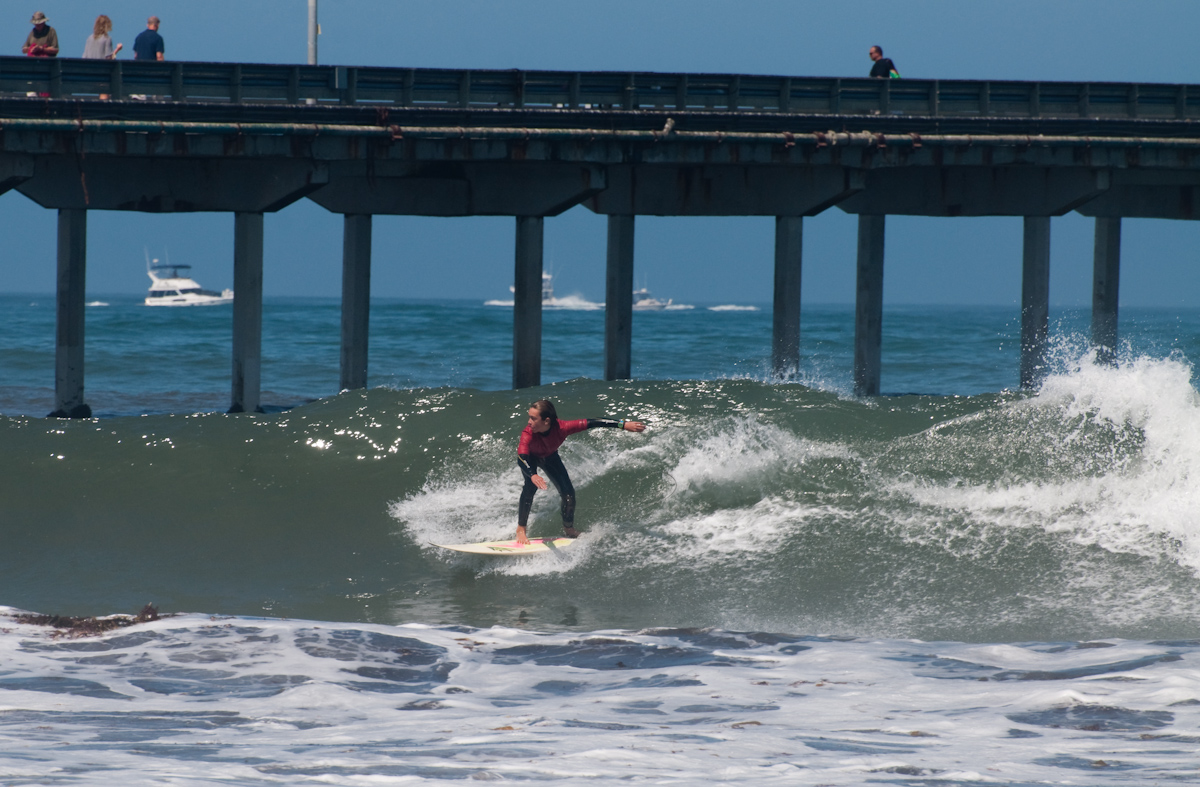
What Ocean Beach is Best Known For
Ocean Beach is a lively, bohemian neighborhood with a classic beach vibe. The beach is popular with surfers and sunbathers for its stunning views and wonderful waves. Nearby Newport Avenue is lined with antique shops, beachwear and surf boutiques, organic groceries, and brewpubs. Ocean Beach has a rich history glorified by surfers; influential surfboard shapers made their breakthroughs on these very waves. Ocean Beach receives various swells and often has rideable waves. In most seasons, waves are suitable for novices.
Features of Ocean Beach
Ocean Beach is a sandy beach with consistent waves, providing ample space for surfers to practice without crowding each other. Optimal surfing conditions occur when a west swell combines with an offshore wind from the east. Surf instructors often recommend Ocean Beach for its gentle, yet big waves, especially under favorable swell conditions, making it a popular spot for novice surfers who have mastered the basics and are looking to refine their technique. The beach’s accommodating environment makes it an ideal location for surfers of all skill levels to improve and enjoy their time on the water.
Ocean Beach also offers a variety of amenities for surfers. Lifeguards ensure a safe environment, and there are restrooms, showers, and a bustling beachfront community with restaurants and shops. The area is home to several surf schools that provide expert instruction and equipment rentals for beginners.
Pros of Ocean Beach
Laid-Back, Welcoming Vibe for Beginners
Wide Sandy Beach for Safe Practice
Ample Space to Spread Out and Learn
Surf Schools and Equipment Rentals Nearby
Lifeguarded and Well-Equipped
Cons of Ocean Beach
Waves Can Be Powerful for Complete Beginners
Limited Parking in the Immediate Area
Can Get Crowded During Peak Times
Criteria Evaluation for Ocean Beach
Wave Conditions: 3/5
Sandy Bottom: 4/5
Crowd Levels: 4/5
Amenities: 4/5
Beginner-Friendly Vibe: 5/5
Price
Ocean Beach has no entry fee, being a public beach. However, surf lessons and equipment rentals come with costs. Local surf schools typically charge $60 to $100 for group lessons and $100 to $200 or more for private lessons. Surfboard rentals average $30 to $50 per day, and wetsuits range from $10 to $20. Many surf schools offer packages that include equipment rentals, making it more affordable for beginners.
Where to Find Ocean Beach
Ocean Beach is located in the heart of the iconic beach community of the same name, just west of downtown San Diego. You can find it at 1950 Abbott St, San Diego, CA 92107.
Oceanside Pier
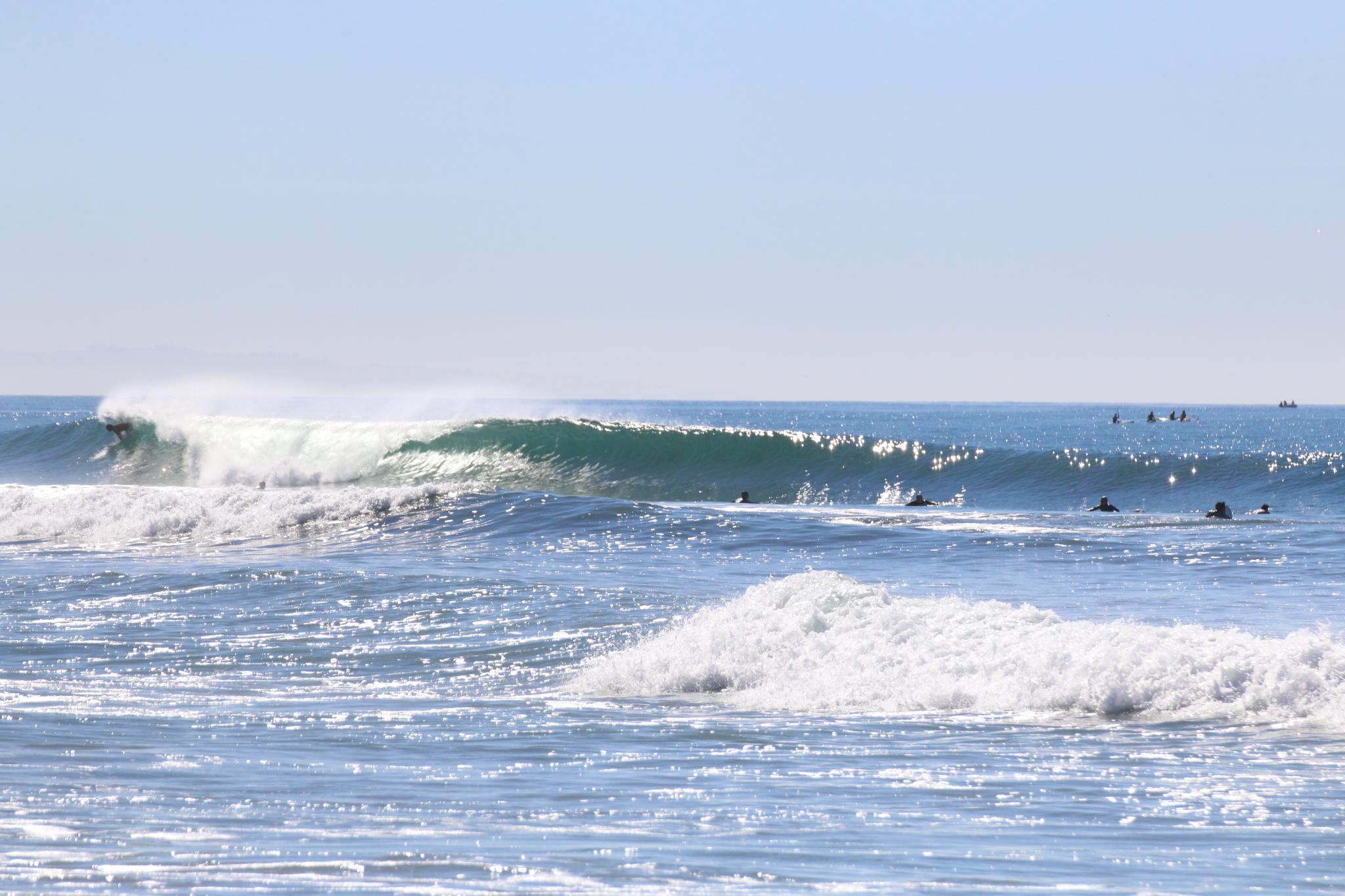
What Oceanside Pier is Best Known For
Oceanside Pier features the oldest, and longest wooden pier on the California coast, offering unique and exciting surfing opportunities. The Pier itself creates breaks that produce excellent waves on both sides, catering to a range of surfing skills. On days with optimal conditions and high swells, the waves become more challenging, even accommodating intermediate surfers. The stunning coastal scenery enhances the surfing experience, making it a visually beautiful location to catch waves. The area surrounding the Pier is vibrant, with numerous amenities such as restaurants, shops, and rental facilities, ensuring surfers have everything they need for a great day at the beach. Oceanside Pier is not just a surfing destination; it’s a picturesque and well-equipped spot that attracts surfers and beachgoers alike.
Features of Oceanside Pier
Oceanside Pier stands out for its diverse wave conditions. The north side features gentler beach breaks, ideal for beginners honing their skills, while the south side offers more powerful waves suitable for experienced surfers. The historic wooden pier, dating back to 1888, adds charm and character to the surfing experience. The area is well-equipped with amenities, including lifeguards, restrooms, and numerous dining and entertainment options nearby. Despite the crowds, especially during peak seasons and weekends, there is usually enough space for surfers of all levels to find a spot and enjoy the waves.
Pros of Oceanside Pier
Variety of Wave Conditions for All Levels
Historic Wooden Pier Structure
Amenities and Entertainment Nearby
Consistent Surf Conditions
Cons of Oceanside Pier
Can Get Extremely Crowded, Especially During Peak Times
Limited Parking in the Immediate Area
Some Areas Can Have Territorial Locals
Criteria Evaluation for Oceanside Pier
Wave Conditions: 4/5
Sandy Bottom: 5/5
Crowd Levels: 3/5
Amenities: 4/5
Beginner-Friendly Vibe: 3/5
Price
Oceanside Pier, as a public beach, has no entry fee, making it accessible to everyone. However, for those interested in taking surf lessons or renting equipment, there are associated costs. Local surf schools typically charge between $60 and $100 for group lessons, while private lessons can range from $100 to $200 or more. Surfboard rentals generally cost $30 to $50 per day, and wetsuit rentals range from $10 to $20 per day. To make it more affordable for beginners, many surf schools offer bundled packages that include both lessons and equipment rentals. These packages provide a cost-effective way for newcomers to learn and enjoy surfing without the need for a significant initial investment. With its variety of wave conditions and convenient amenities, Oceanside Pier is a great spot for surfers at all levels.
Where to Find Oceanside Pier
Oceanside Pier is located in the heart of the Oceanside community, just north of San Diego. You can find it at 1 Pier View Way, Oceanside, CA 92054.
Moonlight Beach (Encinitas)
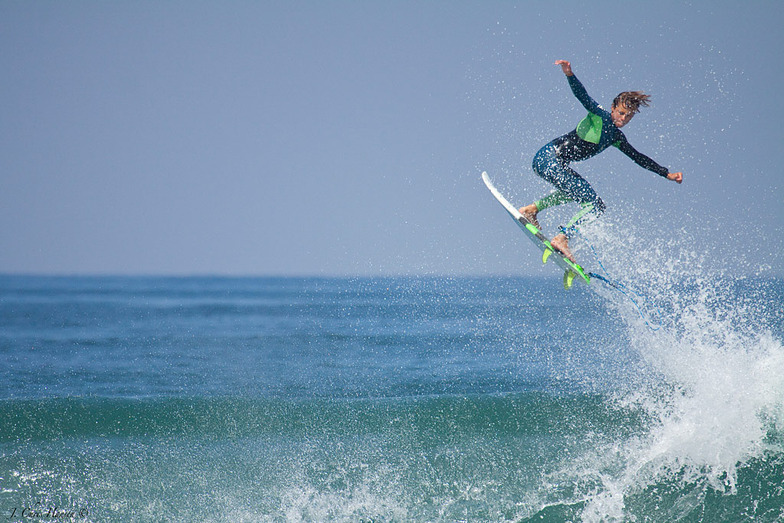
What Moonlight Beach is Best Known For
Moonlight Beach, situated in the delightful coastal town of Encinitas north of San Diego, is renowned as a haven for surfers. Its serene and beginner-friendly waves gently cascade onto the expansive sandy beaches, making it perfect for those embarking on their surfing adventures. The beach’s relaxed ambiance, coupled with its breathtaking coastal views, encapsulates the quintessential Southern California surfing experience.
Features of Moonlight Beach
Moonlight Beach’s wide sandy shoreline stands out as a prime feature, offering abundant space for beginners to comfortably spread out and hone their surfing skills without feeling cramped or crowded. The gentle, rolling waves that characterize this beach are not only perfect for learning the fundamentals of surfing, such as paddling, popping up, and riding, but they also create an inviting and accessible environment for newcomers to the sport.
Moreover, Moonlight Beach is thoughtfully equipped with a comprehensive range of amenities tailored to both surfers and beach enthusiasts alike. On-duty lifeguards ensure a safe experience, while convenient facilities like restrooms and picnic areas add to the comfort and convenience of visitors. Although parking availability may be limited at times, the beach itself maintains a serene and uncrowded atmosphere, making it an idyllic sanctuary for those seeking a peaceful escape from the typical beach crowds.
One of the most notable aspects of Moonlight Beach is its vibrant and inclusive surf community. Here, experienced surfers often take on the role of mentors, readily sharing tips, techniques, and encouragement with those who are new to the sport. This sense of camaraderie and support not only enhances the overall surfing experience but also contributes to the warm and welcoming atmosphere that Moonlight Beach is renowned for.
Pros of Moonlight Beach
Gentle, Beginner-Friendly Waves
Wide Sandy Beach for Safe Practice
Peaceful and Rarely Overcrowded
Mellow, Welcoming Surf Community
Lifeguarded and Well-Equipped
Cons of Moonlight Beach
Limited Parking in the Immediate Area
Can Get Crowded During Peak Times and Seasons
Criteria Evaluation for Moonlight Beach
Wave Conditions: 4/5
Sandy Bottom: 5/5
Crowd Levels: 4/5
Amenities: 4/5
Beginner-Friendly Vibe: 5/5
Price
Moonlight Beach, a public haven, welcomes visitors without an entry fee. However, for those diving into surf lessons or gear rentals, costs come into play. Surf schools in Encinitas commonly price group lessons from $60 to $100, while private sessions range from $100 to $200 or beyond.
Renting a surfboard and wetsuit adds to expenses, with daily rates averaging $30 to $50 for a board and $10 to $20 for a wetsuit. Bundled packages, often offered by surf schools, combine lessons and equipment rentals for a more budget-friendly option, particularly beneficial for beginners venturing into the waves.
Where to Find Moonlight Beach
Moonlight Beach is located in the heart of the charming coastal town of Encinitas, just north of San Diego. You can find it at 400 B St, Encinitas, CA 92024.
Check out our latest news and updates on surfing in San Diego.
Carlsbad State Beach
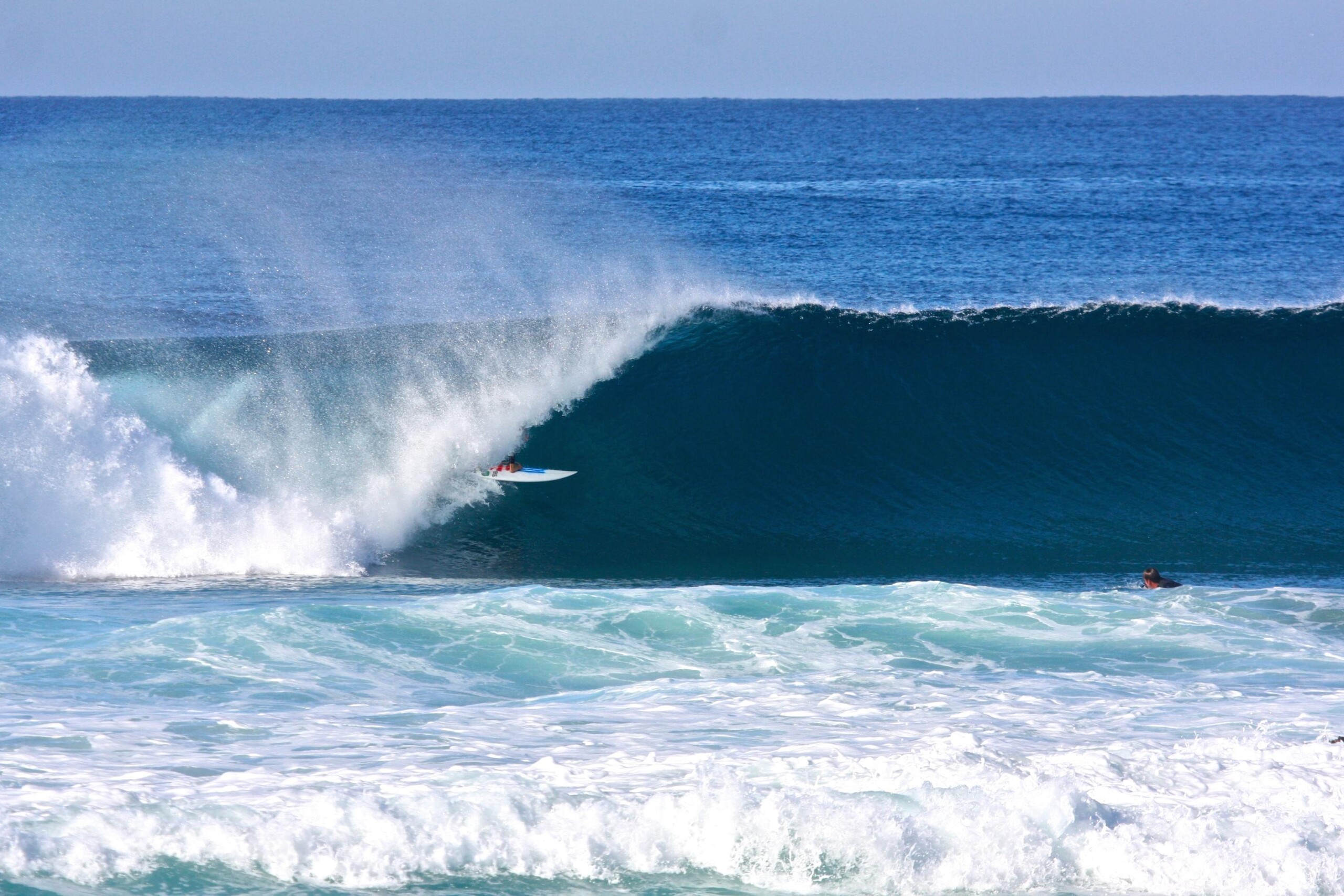
What Carlsbad State Beach is Best Known For
Carlsbad State Beach has quietly established itself as a hidden treasure among the array of beginner surf spots in San Diego County. Its reputation for being a haven for beginners is due to smaller, softer waves. The waves here are often described as “mushier,” which is advantageous for newcomers to the sport.
What sets Carlsbad State Beach apart is not just its wave characteristics but also its overall atmosphere. The beach boasts wide sandy shores that provide ample space for practicing and honing skills. Its laid-back vibe adds to the appeal, creating a tranquil setting that contrasts with the crowds and commotion often found at more popular surfing locations.
For beginners, this environment offers a valuable opportunity to learn and progress confidently without feeling overwhelmed or intimidated, making Carlsbad State Beach a cherished gem for those starting their surfing journey.
Features of Carlsbad State Beach
Carlsbad State Beach features a wide, sandy shoreline, providing a gentle landing spot for the inevitable wipeouts. The entire beach has a sandy bottom, eliminating concerns about reef or rock hazards.
Although the waves can be inconsistent, they are usually mushier and softer, making them perfect for practicing basic surfing skills. The beach is rarely crowded, giving beginners plenty of room to practice without feeling cramped or interfering with others.
While amenities are limited, with few lifeguards and restrooms available, this is balanced by the beach’s peaceful and serene atmosphere, offering a respite from the chaos of more popular surfing locations.
Pros of Carlsbad State Beach
Smaller, Mushy Waves Perfect for Learning Fundamentals
Wide Sandy Beach with No Hazards for Safe Practice
Rarely Crowded, Providing Ample Space for Beginners
Peaceful and Serene Atmosphere
Friendly, Welcoming Surf Community
Cons of Carlsbad State Beach
Inconsistent Wave Conditions at Times
Limited Amenities (Few Lifeguards, Restrooms)
Can Get Crowded During Peak Times and Seasons
Criteria Evaluation for Carlsbad State Beach
Wave Conditions: 3/5
Sandy Bottom: 5/5
Crowd Levels: 5/5
Amenities: 3/5
Beginner-Friendly Vibe: 5/5
Price
Carlsbad State Beach, a public state beach, welcomes visitors with no entry fee. However, if you’re interested in surf lessons or renting equipment, there are some costs to consider. Surf schools in the Carlsbad area typically charge between $60 and $100 for group lessons, while private lessons can range from $100 to $200 or more. Additionally, daily rentals for surfboards average around $30 to $50, and wetsuit rentals range from $10 to $20. Many surf schools offer bundled packages that include equipment rentals, providing a more cost-effective option for beginners looking to dive into the sport.
Where to Find Carlsbad State Beach
Carlsbad State Beach is located in the heart of the coastal city of Carlsbad, just north of San Diego. You can find it at 7201 Carlsbad Blvd, Carlsbad, CA 92011.
Check out our blog for more tips and insights on surfing in San Diego.
Notable Mentions
Trestles Beach (San Clemente)
World-famous surf spot offering perfect year-round waves. While more suited to advanced surfers, the Lower Trestles area can work for beginners on smaller days with instruction. Find it at 949 Basilone Rd, San Clemente, CA 92672.
15th Street (Del Mar)
Family-friendly beach break in Del Mar, with amenities and a welcoming vibe for learning. Can get crowded at times. Find it at 1500 Camino Del Mar, Del Mar, CA 92014.
San Onofre (San Clemente)
Iconic spot known for its beginner-friendly “Old Man’s Beach” area. Offering a great learning environment during the summer months. Find it at Old Pacific Highway, San Clemente, CA 92672.
Mission Bay
The calmer waters of Mission Bay can provide an easy introduction for total beginners before venturing into the ocean waves. Find it at 1600 Quivira Rd, San Diego, CA 92109.
Frequently Asked Questions
What is the best time of year to surf in San Diego?
The optimal time to surf in San Diego is typically from early September to November. During these months, water temperatures are at their peak, and the waves are usually the most consistent and well-formed. However, it’s essential to recognize that San Diego offers excellent surfing conditions throughout the year, with each season presenting its own distinct characteristics and challenges. Spring and summer bring gentler waves ideal for beginners, while fall and winter offer more robust and adventurous conditions for experienced surfers. This year-round variety ensures that surfers of all levels can enjoy San Diego’s coastal waves whenever they visit.
Do I need to take surf lessons as a complete beginner?
While not strictly required, taking surf lessons is highly recommended for complete beginners. Surfing can be challenging and potentially dangerous without proper instruction and guidance. Lessons from a qualified surf instructor will help you learn the fundamentals safely and efficiently, offering valuable tips and techniques to accelerate your progress. Group classes, in particular, not only enhance your learning experience but also provide an opportunity to build friendships with others who share your passion for surfing. This supportive environment fosters camaraderie and a sense of community, making your introduction to surfing both enjoyable and effective.
What kind of surfboard should I use as a beginner?
For beginners, it’s generally recommended to start with a larger, more stable surfboard, such as a longboard or a foam-topped softboard. These boards are wider and longer, providing increased buoyancy and stability, which makes it easier to catch waves and maintain balance while learning the basics. The extra surface area helps new surfers develop their skills with greater confidence and less frustration. As you progress and gain more experience, you can transition to shorter, more maneuverable boards that offer greater responsiveness and agility, allowing for more advanced techniques and maneuvers. Starting with the right board is crucial for building a strong foundation in surfing.
What should I bring to my surf lesson?
When attending a surf lesson, it’s essential to come prepared with the necessary items. At a minimum, you should bring a towel, a swimsuit or boardshorts, and sunscreen (if the weather requires it). Additionally, bringing water to stay hydrated is crucial, as is a sweatshirt or sweatpants for warmth after you’re out of the water. A hat can help protect you from the sun, and wearing polarized sunglasses can minimize glare from the sun’s reflection off the water, enhancing visibility and comfort.
How do I physically prepare for surfing?
Surfing is a demanding sport and needs high athleticism; you’ll need a combination of upper body strength, cardiovascular endurance, and overall physical fitness. Push-ups, pull-ups, and rowing exercises build upper body strength essential for paddling and popping up on your board. Cardiovascular activities like running, swimming, or cycling improve endurance, enabling you to paddle longer and ride waves more effectively. By integrating these exercises into your fitness routine, you’ll better prepare your body for surfing’s physical demands, accelerating your progress and enhancing your overall enjoyment of the sport.
Final Thoughts
The path of surfing starts with selecting the right beginner-friendly spot that will significantly impact your learning experience. Whether you opt for the gentle waves of La Jolla Shores, the relaxed vibes of Tourmaline Surf Park, or the laid-back ambiance of Ocean Beach, each location presents distinct advantages and challenges.
Embrace the learning process, acknowledge your achievements, and don’t let wipeouts discourage you; falling down repeatedly is part of learning until you get it right. Surround yourself with a supportive community, seek guidance from experienced instructors, and prioritize safety at all times. With perseverance, patience, and the right mindset, your surfing journey in San Diego can be incredibly rewarding and enjoyable. Thank you for joining us on this extensive guide and as always; hang loose.










